14 Things to Look for in Boats
1. Proper Freeboard height
All boats are built for specific conditions and missions. It is the responsibility of each boat operator – and his or her responsibility alone – to operate the boat in conditions for which it was built. The height of the boat’s freeboard must match the boat’s mission.
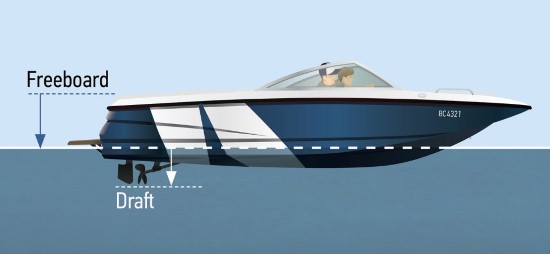
2. Adequate Dewatering Design and Equipment
If water gets into the boat, you need to get it out. For example, all boats that are kept on a dock or a mooring should have a self-draining cockpit. That means simply that the cockpit deck should be higher than the waterline so that rain water or sea water coming aboard can find its way out – by gravity – without a pump.
Larger boats should have appropriate capacity bilge pumps and ocean-going vessels should have emergency valves on the engine intake so that the engine raw water pump can be used for dewatering.
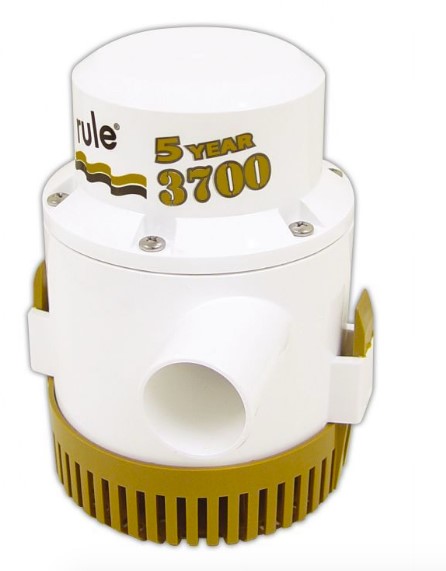
Small open aluminum boats will not have self-draining cockpits so a bucket should always be aboard for bailing. When left at a dock, these boats should be monitored.
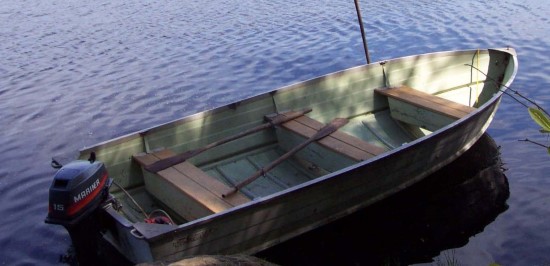
3. Seacocks or gate valves on thru-hull fittings
All thru-hull fittings below the waterline must have a marine seacock or gate valve that can be turned off in case a hose gives way.
All hoses leading to a thru-hulls should have double hose clamps at both ends.
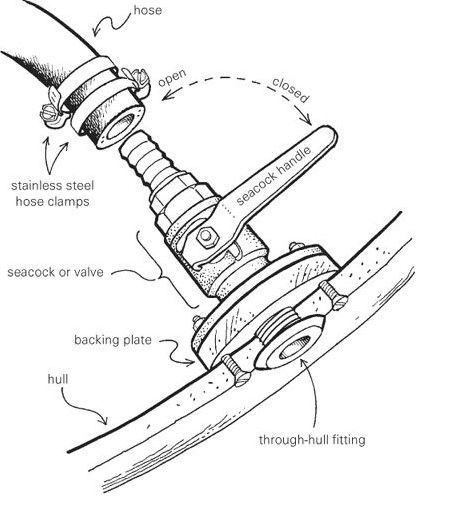
4. All thru-hull shut-off valves must be easily reachable
This sounds obvious but we are amazed every year when we find a few boats that require an orangutan to reach the thru-hull valves.
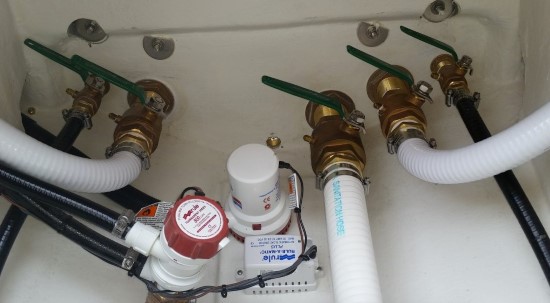
5. Every boat with cockpit drains or scuppers should have large ones that are unobstructed
When metal plates with holes in them are used for cockpit drains, its usefulness is greatly diminished. The best design in our opinion is one that allows the full interior diameter of the drain and hose to be utilized. Plates with small holes in them greatly restrict water flow.
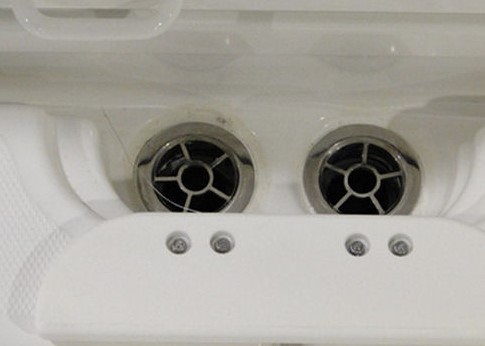
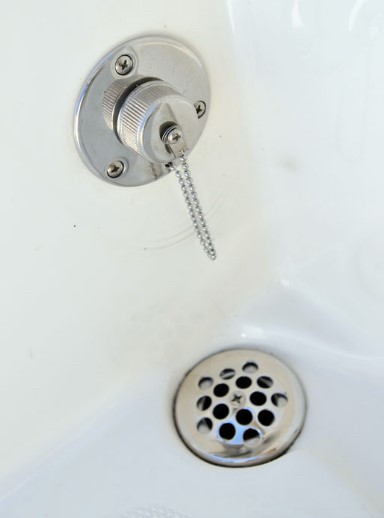
6. Access to fuel-fill fittings
All boats should have specific marine grade hose that leads from the fuel-fill on deck to the top of the fuel tank. After each refueling the operator should check the hose junctions at the top of the tank to make sure there is no leakage. This should be done before the blower is turned on.
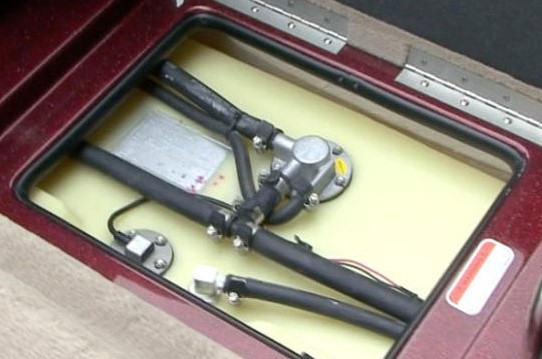
7. A proper anchor locker
Increasingly, builders of small boats are eliminating a dedicated locker in the bow for anchors and anchor rode. The reason is usually because they are trying to create more seating space.
Furthermore, few pontoon boats have a dedicated anchor locker.
In a boat with no dedicated anchor locker, a seat storage locker can be used to store both the anchor and the anchor rode. To facilitate quick deployment and eliminated tangles in the rode, this locker should not be used for any other purpose.
Large boats should have a large enough access to the rode locker to facilitate untangling the anchor chain or line. After a rough passage, the chain can become horrendously tangled.
All boats must have an anchor and an anchor rode.
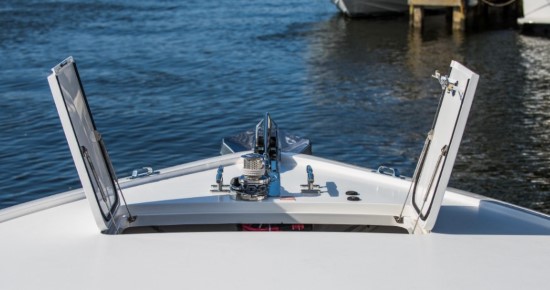
8. Proper anchor cleats on the bow
This is a key item of equipment that more and more builders these days are skimping on in small boats. Ideally, the cleat should be on or close to the centerline of the boat.
We do not favor using cleats set off to each side of the bow on the rail for the anchor rode tie-off.
As a corollary to this, in every anchor locker there should be a way to tie the bitter end of the rode to the hull or other a secure structure.
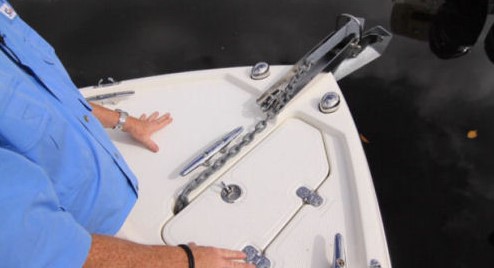
9. Reboarding ladder extending 22” below the waterline
ABYC standards require that virtually all power boats be equipped with a ladder that can be reached by a person in the water – and that it extend at least 22” below the waterline.
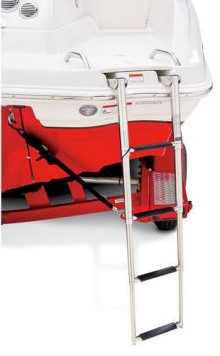
10. Handy Engine Kill Switch or Shutoff
All small boats must be equipped with a kill switch that is in a location conducive to a lanyard being connected to the operator. Large boats should have an emergency engine shut off device handy to the helm.
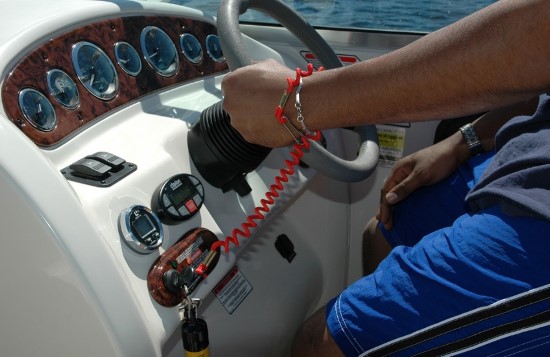
11. Windshield header ABOVE eye level
If the windshield header is at eye level when underway, the operator will never be comfortable. Either he must stand up or duck down to see forward.
Note that most boats ride at a 3- to 5-degree bow-high attitude when on plane. As a result, what may appear to be a header at eye level at rest is actually higher on plane. Nevertheless, when idling the header should not be at eye level.
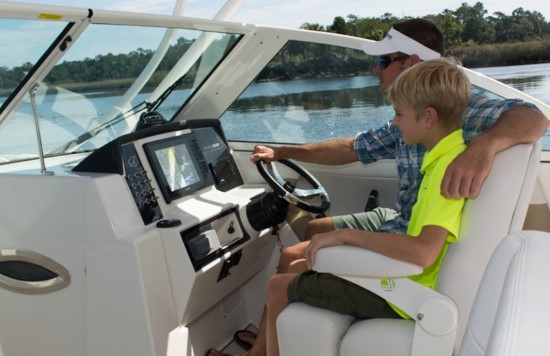
On large boats, particularly European-designed express cruisers, it is often impossible for taller drivers to stand at the helm and see out forward without bending down. Such boats require that the captain must be always seated when piloting.
12. Operator’s pedestal seat must not wobble
A common complaint among owners of small boats is that the helm seat wobbles. Not only is this annoying, it can also be dangerous.
All seats should be ergonomically correct, which is to say – be comfortable.
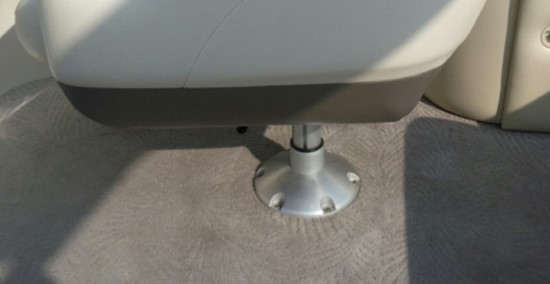
13. Handholds for all seats
ABYC standards require that a handhold be installed for every seat on a small boat. The reason is obvious, and while most builders are careful to do this, some seats are occasionally in locations that do not lend themselves easily to the installation of handholds.
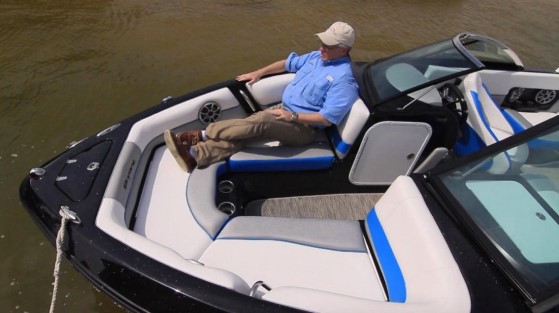
Large boats designed to go offshore should have overhead handholds, something we rarely see.
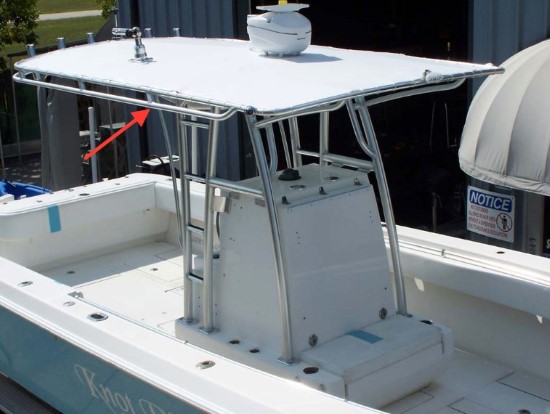
14. Adequate Seating Capacity
Every boat under 26’ has a U.S.C.G capacity plate by the helm that notes both the maximum horsepower for the boat and its rated capacity for passengers.
The stated passenger capacity sometimes bears little relationship to the number of seats on the boat. The reason is because the U.S.C.G uses a formula to calculate load capacity based on interior cockpit volume and an average weight for passengers of between 150 and 180 pounds (68-82 kgs).
We recommend that consumers count the number of seating positions and use the smallest of that number or the U.S.C.G-rated capacity.
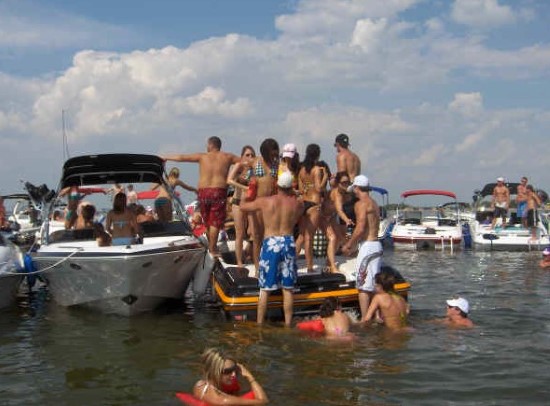
In boats over 26’ there is no capacity limitation in the U.S., but in Europe the CE classification changes depending on how many people are aboard. Owners of boats with a flying bridge should be careful not to overload the bridge. Some manufacturers affix plates on the stairs leading to the bridge giving its capacity.